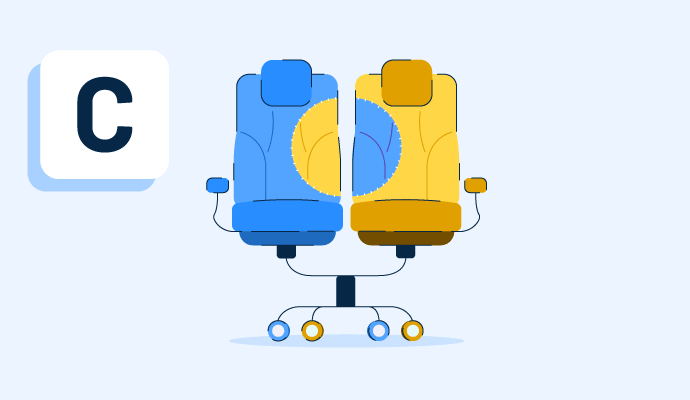What is a co-owner?
A co-owner is an individual or group who shares asset ownership with other persons. Each shareholder owns a certain percentage of the asset, the terms of which are described in the ownership agreement.
A co-ownership contract outlines revenue treatment, tax obligations, and ownership details. The terms of the agreement are unique to each owner and typically depend on the asset’s nature, governing jurisdictions, and legal relationship between the co-owners.
Property owners use property management software to simplify day-to-day responsibilities arising from real estate co-ownership. The tools assist in various tasks, such as tenant management, leasing, and property accounting.
Business co-owners may use equity management software to administer a company or asset’s equity. These platforms track and manage how equity is issued, ensuring compliance.
Types of co-ownerships
The type of co-ownership depends on the financial and legal obligations agreed upon by the parties. Different rules and allowances for each kind of co-ownership are discussed below.
Tenancy in common
When two or more people have an ownership interest, they’re part of a tenancy in common (TIC). There is no limit on the number of property owners. Each may have unequal investment stakes, which usually correspond to the financial investment made by the co-owners at the time of asset purchase.
Example
A TIC with three co-owners buys a property for $400,000. Owner A paid $200,000 and has a 50% ownership interest. Owner B paid $120,000 and has a 30% ownership right now. Owner C has a 20% ownership interest because they paid $80,000.
Tenancy in common doesn’t usually have rights of survivorship, so when a tenant dies, property shares pass down to their heir instead of the other tenants.
Anyone is eligible for TIC, regardless of marital status.
Joint ownership
Also known as joint tenancy with rights of survivorship (JTWROS), joint ownership necessitates equal ownership rights for tenants. This holds even if only one owner has paid for the asset.
Factors to qualify for joint ownership
- Time: The ownership interest must begin simultaneously for all joint tenants.
- Interest: All owners must have equal property rights.
- Title: All owners must receive the same title in the ownership agreement.
- Possession: Property access and usage rights must be the same for all co-owners.
In joint house ownerships, survivorship rights exist. When a co-owner dies, the deeds outline that interests are to be passed on to the others.
Community property ownership
Community property ownership is eligible only for married couples and is available in nine states in the United States of America. Arizona, Texas, California, Idaho, Louisiana, Nevada, New Mexico, Washington, and Wisconsin recognize couples as a singular financial entity.
Unlike the automatic guarantee in a joint ownership agreement, rights of survivorship must be explicitly specified when dealing with community property deeds.
Tenancy by the entirety
Another co-ownership model for married couples is tenancy by the entirety (TBE). This co-ownership is an example of joint tenancy that comes with survivorship rights. In case of the death of a spouse, the asset is passed down in the other direction.
Benefits of co-ownerships
Co-ownership has many advantages, especially in the context of real estate. It cuts down the property's purchase price, increases buying opportunities, saves on associated expenses, and relieves maintenance costs.
- Enables cost sharing. Purchasing large assets is not a small task. Arrangements like co-ownerships allow for splitting property costs and helping buy properties, which might have been challenging without a partner.
- Lowers associated costs and tasks. With properties come secondary costs such as insurance, fees, and taxes. Co-ownership reduces costs when shared between owners. It’s also beneficial as responsibilities around the asset, such as conducting home inspections and creating rental applications, are divided between the parties.
Challenges of co-ownerships
Sharing asset ownership comes with challenges as multiple stakeholders are involved.
One of the biggest problems with co-ownership is how owners want to handle property management. Owners may be exposed to real estate liabilities like mortgage payments, which are subject to defaults and can cause financial distress to the other owners. Buying out a co-owner can become complicated if another owner is unwilling to sell their share.
Whatever the challenge, it’s essential to maintain communication, trust, and transparency between co-owners to settle disagreements and disputes. Since the personal and financial repercussions can be huge, understanding how to navigate the nuances of property co-ownership is key to success.
Co-ownership vs. partnership
Even though co-ownerships are often confused with partnerships, being a co-owner and a partner are different.
Co-ownership describes two or more people buying a property or asset together, the sale of which cannot be processed without the consent of all shareholders. All proceeds from asset sales must go to both co-owners. The interest from the proceeds is dictated by the agreement signed and may or may not be intended as profit-making decisions. Co-ownerships are common for family members, friends, and business owners.
A partnership refers to an arrangement wherein all stakeholders intend to earn income on the asset. A partnership will almost always have a business or trade motive associated with the investment.
General partners, managing partners in a general partnership, have unlimited financial liability and are personally responsible for a company’s profits and losses.
Limited partners, also known as silent partners, have no personal obligations to a business arrangement except their initial investment. These individuals are protected from litigants as they have limited liabilities.
Partners are allowed to act within the interests of their own business or agency instead of what works best for the shared asset. On the other hand, co-owners are legally required to work within the interests of their relationship and are liable if they diverge from the agreed terms.

Aayushi Sanghavi
Aayushi Sanghavi is a Campaign Coordinator at G2 for the Content and SEO teams at G2 and is exploring her interests in project management and process optimization. Previously, she has written for the Customer Service and Tech Verticals space. In her free time, she volunteers at animal shelters, dances, or attempts to learn a new language.




















